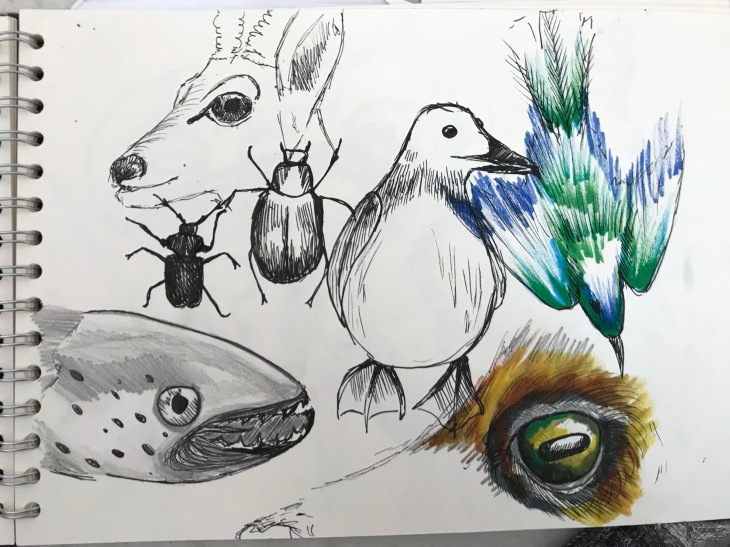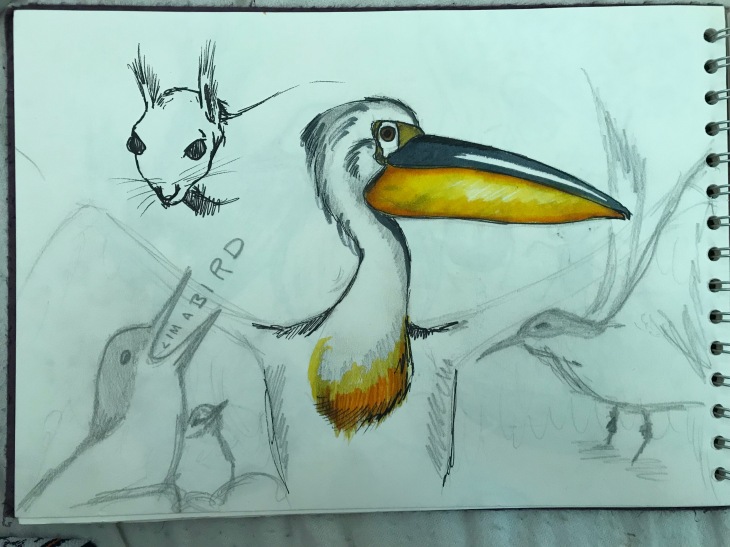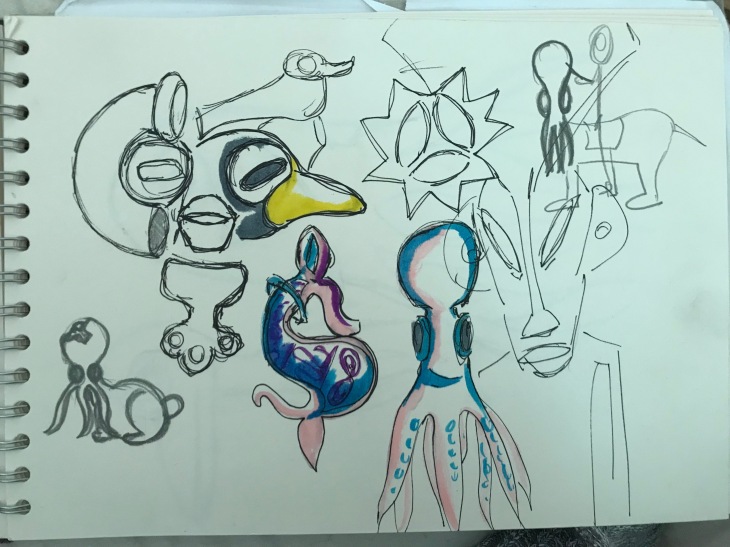How has Adam Elliot’s used colour in his 2003 short film ‘Harvey Krumpet’ and his 2009 full length film ‘Mary and Max’?
Adam Elliot is an Australian animator born in 1972, and has received over 100 awards, including an Academy Award for his 2003 film ‘Harvey Krumpet’. (IMDB, 2017) Elliot has said that ‘so much animation is cluttered with colour and movement’ (Australian Film Commission, 2004), and consequently both films have a minimalist quality. Elliot is known for coining the term ‘clayography’, a combination of ‘clay’ and ‘biography’. Both ‘Harvey Krumpet’ and ‘Mary and Max’ have a similar biographical tone, the stories over shadowed by an omnipresent narrator. ‘Harvey Krumpet’ follows the story of its eponymous character from birth to the end of his life in a home for Alzheimer’s patients; it is a bitter sweet story that explores the idea of life, death, and seizing opportunity while you can.
‘Harvey Krumpet’ was Elliot’s first venture into colour, as all previous work had been in black and white. It is also when he was able to extend the length of his animation, his first three films being 5 minutes and ‘Harvey Krumpet’ extended to 23 minutes. Elliot has said that he ‘let’s the characters tell him how long their story should be’ (i8Media, 2009), which allowed ‘Harvey Krumpet’ to explore the use of colour and character with more depth and detail than before. Elliot said in an interview that ‘all our lives are full of contradictions and absurdity from one time or another’ (Australian Film Commission, 2004). This shows in his use of colour, it has moments of absurdity (for instance in his dream sequence as seen above) that resonates with the confusion that the character is feeling. In the final 5 minutes of the film Harvey is in a retirement home for Alzheimer’s patients, rain hitting the window as the narrator poignantly says ‘time drizzled on’ (fig. 1). The colours are red and yellow but have been worn down with time, making them dirty and grey. The room is dimly lit, suggesting the light is fading from their lives as they slowly loose themselves.
We then have a fade transition from Harvey’s face with his eyes moving in a confused state (fig. 4) to him smiling and happy (fig. 5). The sound changes from a monotonous clock ringing and the rain hitting the widow, to a happy, humorous song, ‘God is better than football’. The colours used for this sequence are brighter and bluer, with flashing bulbs and a light, ethereal background (fig. 2 and 3). Although it is happy, the absurdity of it reminds us that it is just a dream, and Harvey will soon be back to his life of darkness.
Six years after the release and subsequent acclaim of ‘Harvey Krumpet’, Elliot created ‘Mary and Max’. This follows the lives of two pen pals, Mary is a young girl, and Max a 45-year-old man with Asperger’s. It discusses the themes of love, life, sexuality and growing old. In an interview Elliot said, ‘When I was starting out the equipment we needed cost hundreds of thousands of dollars’ (i8Media, 2009). After the success of his previous films the budget for ‘Mary and Max’ was much larger. I think this can be seen when watching the film, it is much more polished and cinematic. It is also his first film that explores two characters in great detail, ‘it is still biographical but it’s really about two lead characters’ (ACMI, 2015). This gives a more obvious opportunity to explore the contrast between two colours.
Elliot has said ‘I really wanted to use colour as a device in this film a lot more than I had in my previous films. I quickly worked out that if there are these two worlds we should really separate them by colour and of course New York is a very concrete place, a grey world. Australia in the 70s to me was very brown’ (Buckmaster. L, 2009). We are first introduced to Mary, one of our protagonists. We begin with a birds’ eye view shot, zooming in to a sign that give us a sense of geography and context (fig. 6). The colours are yellow, dusty and muted, a sense of heat and drought. We are then shown a series of objects, such as lawn ornaments and letter boxes, that decorate the dry, yellow gardens of the towns citizens. These are significant in showing the downfall of a once prosperous town, there is a sprinkler system, although there is a no water (fig. 8), and a bin full of litter even though we are told it is a ‘tidy town’ (fig. 9). Elliot has said, ‘We wanted to make Australia dehydrated, like a nicotine stain’ (Buckmaster. L, 2009). I think this an interesting choice of words, as Mary’s mother is constantly seen with a cigarette in her mouth. It suggests Mary’s world is tainted by her mother, a theme that continues throughout the film. The camera then zooms onto Mary’s face framed by a window (fig. 7), an indication that we are entering Mary’s life. The strong, straight lines of the window around Mary suggest she is trapped, she is looking out at the world without being able to participate.
There is then a fade to black to indicate we are moving somewhere else, and a parallel birds eye shot of New York (fig. 10). We again zoom in on our main character’s face, framed by a window (fig. 11). This immediate parallel indicates the similarities between the two characters’ situation. The only clear deviation from the yellow or grey colour palette is the minimal use of red (fig. 12). It appears on both our lead characters and objects that our important to the story, ‘we used spot red as a device to make all those little objects that Mary and Max send each other more potent, more significant’ (Buckmaster. L, 2009). In colour theory red has many different meanings, but I think in this case it could represent friendship, kinship and love. Elliot himself compared it to the girl in red coat in ‘Schindlers List’, in this context it is a symbol of innocence (Spark notes, 2015).
Both of these films use the contrast between two worlds to highlight the normality or strangeness of the other, whether it is Harvey’s dream sequence or the difference between yellow/grey and red. I think the difference comes in the execution, ‘Mary and Max’ feels as if Elliot has really found his style and audience, whereas in ‘Harvey Krumpet’ he is still working out the kinks. I think these two films show how colour can be used subtly but to huge effect.
Bibliography
ACMI, 2015. Mary and Max: The Exhibition- interview with Adam Elliot. Available from: https://www.youtube.com/watch?v=UUVzPaBANkw&t=400s (Accessed 26/11/2017)
Australian film commission, 2004. Adam Elliot Writer/Director Harvey Krumpet. Available from: http://afcarchive.screenaustralia.gov.au/newsandevents/afcnews/converse/elliot/newspage_93.aspx (Accessed 29/11/2017)
Buckmaster. L, 2009. Interview with Adam Elliot, writer/director/designer of Mary and Max. Available from: https://blogs.crikey.com.au/cinetology/2009/04/10/q-a-with-mary-and-max-writerdirectordesigner-adam-elliot/ (Accessed 29/11/17)
Harvey Krumpet, 2003. Animated film. Directed by Adam ELLIOT. Australia: Melodrama Pictures.
i8Media, 2009. Adam Elliot Talks About animation. Available from: https://www.youtube.com/watch?v=-ibW9Cd6okM&feature=youtu.be (Accessed 25/11/2017)
IMDB, 2017. Adam Elliot Biography. Available from: http://www.imdb.com/name/nm0254178/bio?ref_=nm_ov_bio_sm (Accessed 25/11/2017)
Mary and Max, 2009. Animated film. Directed by Adam ELLIOT. Australia: Melodrama Pictures.
Spark notes, 2015. Schindler’s List Themes, Motifs and Symbols. Available from: http://www.sparknotes.com/film/schindlerslist/themes.html (Accessed 28/11/17)




















